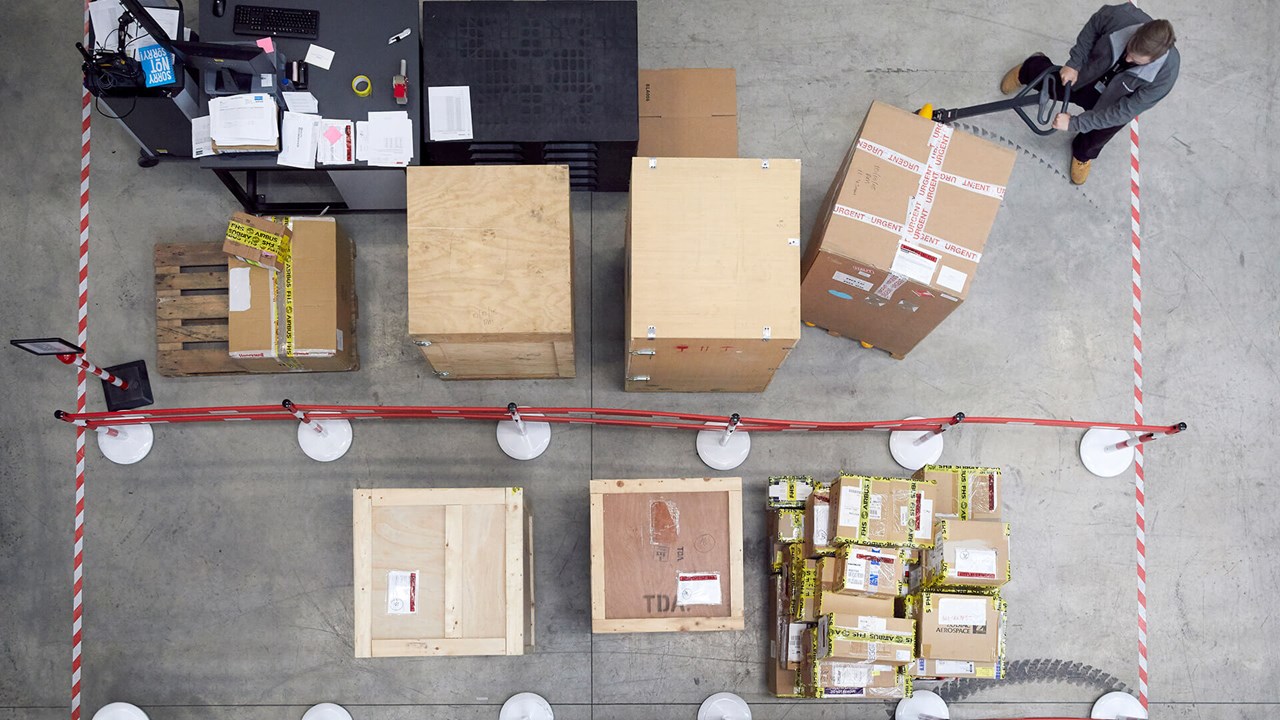A paperless supply chain might sound like a pipe dream when you think about the sheer volume of aircraft parts circulating between OEM's, suppliers, airlines, and operators. But a few outliers and innovators are looking to shake things up and inject some digital methods into the supply chain madness.
The reliance on the archaic labour-intensive supply chain methods of printing, scanning, making copies, and making more copies of copies, is filled with inefficiencies. In all areas along the supply chain, companies wrestle with mountains of paperwork, but luckily the promise of one day moving to digital systems could be closer than we thought.
Last year we spoke with Tristan Whitehead from PartsPedigree is his quest for digitising aircraft part records using blockchain. Since then, the company has rebranded and expanded its scope to bring its offer of a paperless supply chain to multiple industries. However, cleaning up aerospace MRO is still high on their agenda.
We reached out to Tristan for this article, to get more of his insights and thoughts on what it will take to bring the supply side up to the level of digital efficiency that is more common in other areas of the aviation industry.
Buried under mountains of paperwork
If you've spent any amount of time working with supply chain documents, certifications, invoices and delivery notes, you will have quickly come to realise that the paperwork surrounding that process can sometimes outweigh the part that it's attached to.
RELATED ARTICLE:
5 aviation data platforms to keep your eye on
"One of my customer's once told me his parts paperwork often weighs more than the parts themselves. I thought he was speaking in jest until he sent me a photograph of 18.5 kg of paperwork that needed to be shipped with one order," Tristan told me during our discussion. "When you discover that there is real truth in these analogies, you have to ask yourself why?"
In describing his thoughts on why the industry seems to be sustaining this unsustainable system, Whitehead went on to explain that he sees the problem due, in part, to three main issues:
Lack of tech-savvy talent
In the past, we've written about the rising threat of labour shortage in MRO—mainly focusing on the lack of computer and systems knowledgeable talent to meet the demand required by newer aircraft, and to replace the growing number of technicians poised to retire in the coming years.
As we move into a more technologically demanding industry, it requires operators and maintenance technicians that can not only handle working with new composite material, but also with vast data systems that will eventually replace conventional analogue systems.
"Over 98% of the supply-chain is led by small-to-midsize enterprises (SME's), and this 98 % handles the majority of the aircraft parts. These are people that are deeply passionate about the processes and perfection of aerospace manufacturing," said Whitehead. "But one of the problems in keeping these small-to-midsize enterprises on the forefront of technological advancement is that they are often not a destination career for young technologically savvy employees."

Lack of budget support
It should be no surprise to anyone that the endeavour to digitise an industry where paper trails can stretch back decades will be no easy task—and to the opinion of many small-to-midsize MROs, not a cheap one either. While it can easy to pinpoint the inefficiencies and inaccuracies of paper-based processes, the initial investment perceived to digitise can be quite a deterrent.
RELATED ARTICLE:
Aviation Cybersecurity: Is the industry behind the curve?
"With many of these small-to-midsize MRO's, the budget is simply not there to invest or develop custom systems that could replace the paper-driven processes. If you look at the vast majority of the market for supply chain technologies, whether it's on the optimising and forecasting side or the plain processing side, the systems are often thought of as too complex or too expensive. Usually developed by software companies targeting larger OEM's or Tier 1 suppliers."
Paper is still an industry standard
When the previous two factors are combined, SMEs are often left relying on what is still widely accepted as the reasonable standard for recording and exchanging documentation—paper.
The FAA, EASA, IATA or any other aviation regulatory agency still treats paper as the standard protocol for exchanging data certifications, invoices, shipping records, etc. While they may be a willingness to go digital, lack of budgets and talent can leave small-to-midsize MRO's falling back on analogue paper-methods, which the industry accepts as a reasonable and standard practice of record-keeping and data exchange.
Shifting perspective from company to part
Rather than falling down the rabbit hole of looking at what is clearly a problematic system, and continuing to pinpoint more issues, we want to speak with Tristan Whitehead more about what he envisioned as possible opportunities that he could see in how this part of the industry could change.
RELATED ARTICLE:
5 things to consider about Big Data in the aviation aftermarket

Much of which has to do with stepping back from the problem, and approaching it from a new perspective. It will require companies along the supply chain to begin viewing the process from the perspective of the part, rather than from that of their company, thus removing small island of paperwork information which cannot be shared.
"When information concentrates at organisational boundaries, it cannot be used to solve much more significant "ecosystem-wide" challenges. Solving them requires multi-party visibility: like predicting demand, optimising inventory, sensing risk in the supply chain or avoiding write-downs on obsolete parts etc. Today, much manual effort is spent on trying to solve these problems. The math is there, but the data simply isn't."
In trying to address this issue, Whitehead went on to explain that his company asked: What would the supply chain look like if we could see it from the part's perspective?
Consequently, by focusing on that question, his company Enspan (formerly Parts Pedigree) was able to develop a unique approach to the answer. A platform where every player can digitally store their data about their interaction with specific parts—and in doing so, providing a broad view of the entire supply chain from the part's perspective.
Greater transparency through digital ecosystems
The work that Whitehead's company has done in looking at the paper problem from the viewpoint of the part addresses another problematic issue—trust between parties along the supply chain.
Much of the hoarding of information comes from the fact that parties can often only see one step ahead or behind in the supply chain. What happens beyond that one step can be a mystery, thus sparking a culture of over documentation and record-keeping (paper trails), as a form of protective insulation should a parts pedigree or provenance come into question.
Whitehead explained that by generating digital documents automatically from transactions, then encrypting and digitally signing them, it allows more transparency between trading partners. Multiple parties along the supply chain can store logistical, operational and technical information against the part batch/serial number.
This information can be requested and accessed by anyone along the supply chain, as long as they are given access to the blockchain key which guards the information.
The long slow road
There is no doubt that a paperless aviation supply chain is in the future, the question then becomes: When? Unfortunately, that is not a question that we can answer. However, it is promising that passionate thinkers such as Tristan Whitehead and the like have taken up the mantle of optimising a fundamental infrastructure of the aviation industry.